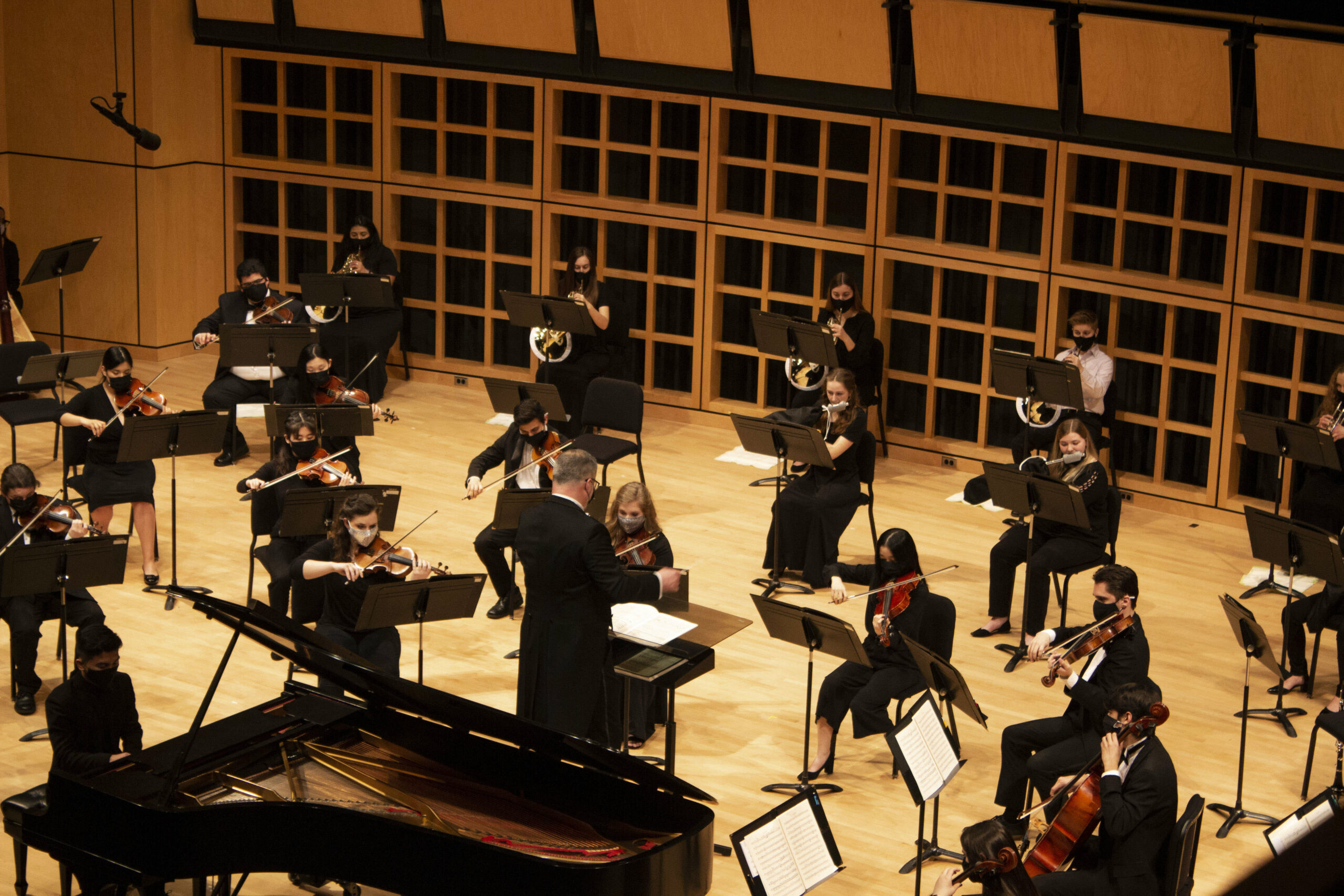The Goshen College music department will present the “Rosary Sonatas” in a violin studio recital this Friday.
The “Rosary Sonatas” were composed by Heinrich Ignaz Franz Biber in the 17th century, but were not discovered until 1905. Consisting of 15 sonatas and a final passacaglia, the collection is an adaptation of the 15 Mysteries of the Rosary, reflecting key moments and events in the lives of Christ and the Virgin Mary.Solomia Soroka, professor of music, chose the “Rosary Sonatas” as studio recital repertoire in honor of the Easter season.
“I was trying to time it with Easter,” she said. “[The sonatas] are all about praying on rosaries and the New Testament and the Resurrection…. But, as I joke, it will still be in time for Ukranian Easter, which is five weeks later this year!”
The collection of sonatas features a type of violin tuning known as scordatura, which translates in Italian to “discord” or “mistuning.”
“It’s an intentional mistuning of the violin,” said Soroka. “[Biber] retuned the violin so each sonata has a different tuning.”
Joel Yoder, a junior, enjoys the challenge that scordatura poses to violinists.
“It’s a very different experience playing scordatura because what your fingers do is not necessarily what your brain expects to hear,” he said. “It’s unexpected — I think that’s my favorite part, the novelty of it all.”
Caroline Greaser, a sophomore, describes scordatura tuning as “hearing the violin in a way it’s never sounded before.”
“It’s honestly pretty easy to learn because the way it’s written is just like the way your instrument is tuned normally, so the fingering is all the same,” she said. “But it sounds different, so it can trip you up a little bit if you’re picking up your instrument and you’re like, wait, that’s not the note I’m supposed to play.”
The sonatas are divided into three sections: joyful mysteries, sorrowful mysteries, and glorious mysteries. Each of the 15 sonatas features a different tuning, as well as a title that corresponds to an event from the New Testament. Soroka notes that Biber’s choice to use scordatura tuning in the “Rosary Sonatas” was “to play into the event that each sonata depicts.”
“In the sorrowful mysteries, you tune the violin to produce a very subdued tone,” she said. “This is when we enter Christ’s life into his crucifixion, his carrying the cross, his wreath of thorns. And then in the glorious mysteries, the violin is tuned in a way that produces very loud ringing because of certain tones. They are ringing of the Resurrection, of the Coronation of Mary, all of this that is most important in the Christian faith.”
Yoder will be performing the 11th sonata, titled “The Resurrection.” His sonata features G-G-D-D tuning, which creates a physical crossing of strings on the violin and thus a symbol of the cross in the Resurrection.
“I will say, it is really weird to play when my strings are crossed,” he said. “You have to really focus on the music and not what your fingers want to do.”
Mariah Kaufman, a junior music education major, will be playing the 13th sonata, titled “Pentecost.” Her sonata is tuned with A-E-C-E scordatura.
“I think what’s really cool is just the way the resonance of the violin changes, particularly in mine where I’m putting two E strings on my violin instead of one,” she said. “That’s what I enjoyed the most about playing it — just playing an instrument that sounds different than it does normally.”
Soroka encourages Goshen College students and staff to attend the recital and “support your peers and colleagues.”
“We want the audience to be pleased and hear and see something different,” she said. “We’ve been deprived of live concerts… and this is very beautiful music. It’s not only educational, but it’s food for the soul.”
Kaufman hopes that those who attend the recital will learn more about scordatura and the historical context of the “Rosary Sonatas.”
“We’re all going to be playing on violins, but they’re all going to sound slightly different,” she said. “Just the way that a simple tuning change affects the timbre of the instrument will be a really cool thing to experience — and we’ll have a little more historical information there, too. So it’s going to be a cool aesthetic experience, but also educational at the same time.”
Yoder notes that scordatura music is rarely performed and that students and employees should take advantage of this opportunity to hear these sonatas in a live context.
“This is music that you’re not going to hear many other places,” he said. “And so I would recommend it for the novelty. The players had a new experience, and you’ll have a new experience, as well.”
Goshen College students and employees can attend the violin studio recital at 7:30 p.m. on Friday in Sauder Concert Hall, while the general public can access the event via livestream.




